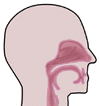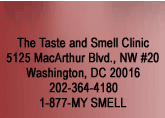  |
||
 |
December 2021Why It Is Necessary to Measure Response to Several Odorants in Order to Evaluate Smell Function in Normal Subjects and in Patients with Smell Loss (Hyposmia)There are more than 10,000 odors which human subjects can detect and recognize. These odorants possess many different qualities and molecular properties. In order to determine smell function in normal subjects or in patients with smell loss (hyposmia) it is necessary to sample smell function for several aspects of this complex matrix of odors which comprise the total receptor field (1). Indeed, measurements of only one, two or even three odorants will not allow an ability to sample the nature of smell function in either normal subjects or in patients with hyposmia. In order to evaluate smell function and evaluate major concepts of the sensory field we have chosen examples of four different characteristic odors which reflect smell function within the field — pyridine (which is pungent), nitrobenzene (which smells like bitter almond and nutty), thiophene (which smells like petroleum products) and amyl acetate (which smells like banana oil). These are just four stimuli from a list of thousands which could be chosen to measure smell function. It is necessary to measure each of these stimuli to determine major aspects of smell function in normal subjects and in patients with hyposmia. Again, measurements of any one, two or even three of these smell qualities are insufficient to determine smell function. Reponses to these odors must also be quantitated to measure smell function. Thus, each odor quality must be evaluated with respect to smell detection, smell recognition, smell intensity and smell hedonics. Comparison to responses in normal subjects must be made for each odor in order to evaluate smell responses in patients with smell loss (hyposmia). These techniques have defined and demonstrated in both normal subjects and hyposmic patients using the best and most complete method of measurement of smell function (2). References
|
|